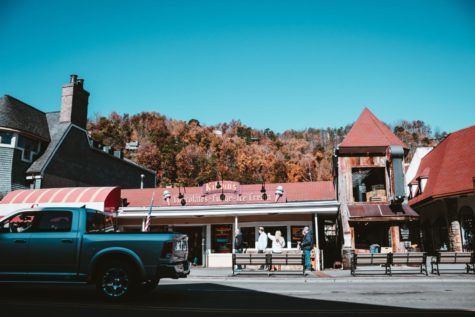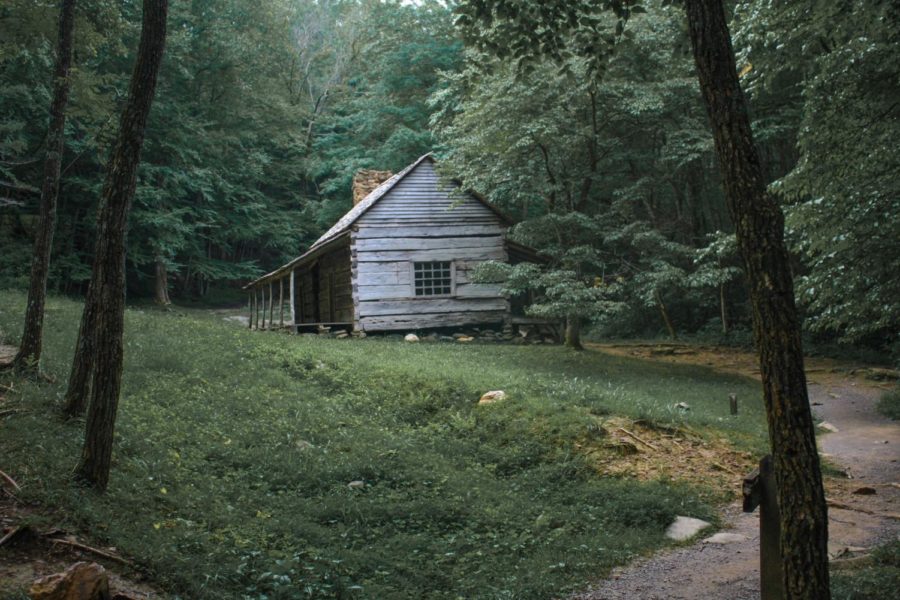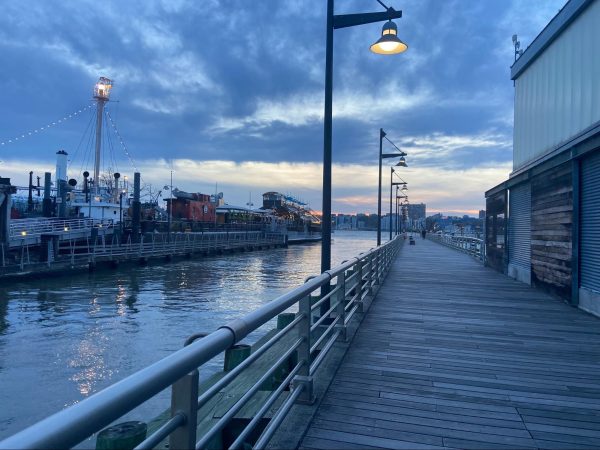The Spine-Chilling Stories of Appalachia
Appalachia is one of the largest and oldest regions of the United States. Its long history involving Native American tribes and settlers have led to the region’s unique culture and supernatural folklore that subtly influence many Americans to this day.
The Appalachian forests are lush and green, providing a perfectly eerie environment for people to question their surroundings.
A notorious creature lurks in the deep forests of the Northern United States. His large size, mysterious nature, and infamous status draw thousands of people to search far and wide in the woods, and millions more to watch grainy videos of him on YouTube. Large, ape-like, and furry, this cryptid has been the subject of mysterious photos, internet debates and legends in the heart of the Appalachian mountain range. While Bigfoot is a staple of Appalachian and American culture, he’s not the only myth to come out of the region. The stories and cultures of Appalachia have a long history, creating a culture that has remnants of America’s distant past.
The Appalachian mountains were formed over 500 million years ago, being among the oldest mountain ranges on Earth. Throughout all the years they’ve stood, millions of different people coming from different groups lived there, creating a distinct culture that defines the region of Appalachia. Known for its deep, damp forests, Appalachia is a rather isolated area. The forests may be beautiful and lush, they can be hosts for terrifying stories.
The Appalachians range from Newfoundland to Northern Alabama, running through most states in the Northeast. Around 16,000 years ago, Native American tribes settled in the region, with the Cherokee, Iroquois, Powhatan and Shawnee tribes being among the first to cultivate the culture of the land, creating the first societies and stories of the lush land. As Europeans (specifically Irish, Scottish, and German people) migrated into the region and brought over slaves in the 1700s, settlers came into frequent conflicts with the Native American tribes, and established treaties which would bring tragic consequences to the tribes.
During the 16th and 17th centuries, the cultures of the Native Americans, European settlers, and African slaves slowly homogenized and became a distinct culture that influenced a large part of America’s cultural identity. The Appalachian mountain range became well known not only as a visiting destination with beautiful scenery, but also a rich spot that is now a crucial part of modern Americana. Many people grew up hearing superstitions, such as black cats and walking under ladders bringing bad luck, and stories of humanoid creatures without knowing their fascinating origins. Some of the most famous spooky stories from American folklore come from this region, and the history behind these stories proves to be extremely interesting.

The Moon-eyed people are some of the oldest legendary creatures from Cherokee Appalachian oral folklore. Supposedly a small, round group of pale-skinned and blue-eyed humanoid creatures, the Moon-eyed people were considered by the Native Americans to be a separate race of nocturnal people, who stayed in caves due to their eyes being so blue that they were sensitive to the sun. The origins of the legend are uncertain, as some believe the creatures are a representation of European settlers, while others believe that the story existed before Europeans arrived in the Americas. Though different tribes had different versions of the story, the majority of the Native Americans and future European settlers agreed that the tale of the Moon-eyed people is one that is peculiar, and one of the most unique stories the region has to offer.
Appalachia’s folklore is not solely limited to tales from the past. More recent iterations of folklore actually stem from the 20th century, with of the more well-known creatures from Appalachia being The Mothman. The fearsome, gigantic creature resembling a human-sized moth with blood red eyes drew the attention of not only people in West Virginia – where the story originated from – but also Hollywood executives who made famous films and television shows about it. It is said that the story of the Mothman originated in November of 1966, when couples Linda and Roger Scarberry and Steve and Mary Mallette reported a 7-feet-tall, white creature with glowing eyes in Point Pleasant, near a former World War II munitions plant. The Scarberrys and Mallettes quickly drove away from the site, while the creature flew after them all the way until the edge of the city. It is alleged that the infamous Mothman has been seen before huge disasters, both natural and manmade. Now, what was the actual Mothman? Some people believe that the creature was a large bird, such as a heron or a crane with a broad wingspan. Others say that the Mothman is an alien from outer space or a balloon with a flashlight attached to it. In the end, it doesn’t really matter what the creature the couples actually saw, because the story is now well known to many people around the United States.
Strangely, the subsequent sightings of the Mothman show the extent of which Appalachia’s folklore connects with popular culture. The creature has been the subject of movies such as The Mothman Prophecies (2002) and appearing in television shows such as the X-Files in 1997.
As the stories from Appalachia were passed down through generations, the origins of these stories become blurred, while the original tales are still known by people today. Most people have heard of the classic American superstitions and mythical creatures coming from the region, but whether or not the folklore is believed depends on the person. The majority of American people do not genuinely believe these superstitions, but due to the folklore’s influence on what people hear and believe, people essentially repeat the stories without putting much thought into what they say. Maitri Sarkar ’23 said, “While I don’t personally believe in creatures like Bigfoot, I feel it’s an interesting tale to tell kids and create interest among those who are older as well.”
People turn to superstitions in order to retain a sense of understanding when the situations they face are out of their control. Mritika Rahman ’23 said, “There’s a fear of the unknown factor that’s always present, some things are just unexplainable. It’s admittedly a little hard to rationalize places that have so many unbelievable stories attached to them.”
People in rough or new terrains find solace in patterns and old tales they recognize and tend to relate the unexplainable to what they’ve already learned from their cultures and past experiences. While the hardships and fears of the Native American tribes and early settlers in the past led to the formation of scary stories and beliefs, these stories eventually came to define American culture and the history of the young nation. The folklore of Appalachia may not be something that many people think deeply about today, but the mere fact that these stories have been passed down, person to person, shows the unity that stories bring to not only a community, but also to a national identity.
“There’s a fear of the unknown factor that’s always present, some things are just unexplainable. It’s admittedly a little hard to rationalize places that have so many unbelievable stories attached to them,” said Mritika Rahman ’23.
Irene Yimmongkol is an Arts & Entertainment editor for ‘The Science Survey.' She edits her peers’ articles that go in the Arts & Entertainment...











